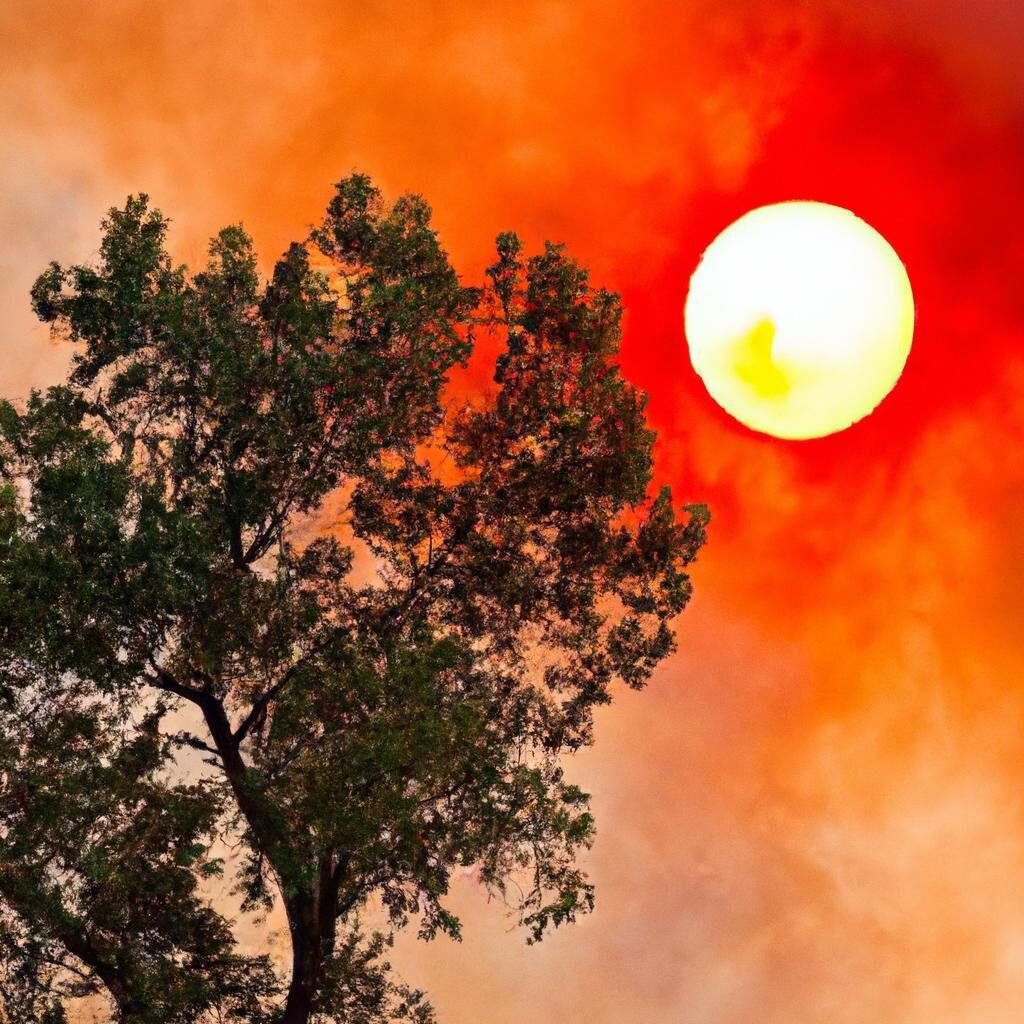In an unprecedented turn of events, a record-breaking heatwave has engulfed the Western United States, posing a severe threat to critical infrastructure and the well-being of millions of residents. As temperatures soar to historic highs, emergency response teams are bracing for the potential fallout of this extreme weather event. Stay tuned as we delve into the unprecedented challenges faced by communities in the midst of this scorching heatwave.
Table of Contents
- Heatwave Puts Power Grid Under Strain
- Dangers of Extreme Heat on Roads and Bridges
- Precautions and Tips for Managing Heatwave Impact on Water Systems
- Q&A
- Insights and Conclusions
Heatwave Puts Power Grid Under Strain
The scorching heatwave sweeping across the Western states has put immense pressure on the region’s power grid, causing concerns about potential infrastructure failures. With temperatures soaring well above 100 degrees Fahrenheit in areas like California, Nevada, and Arizona, the demand for electricity to power air conditioning units and cooling systems has skyrocketed.
Utility companies are working around the clock to prevent widespread blackouts and brownouts as the strain on the power grid reaches critical levels. The excessive heat not only affects residential homes but also puts a heavy burden on commercial buildings, hospitals, and other essential facilities that rely on electricity for operation.
Authorities are urging residents to conserve energy wherever possible to help alleviate the stress on the power grid. Simple actions such as turning off unnecessary lights, adjusting thermostat settings, and using appliances during off-peak hours can make a significant difference in preventing power outages during this unprecedented heatwave.
Dangers of Extreme Heat on Roads and Bridges
The scorching temperatures from the record-breaking heatwave in the Western States are not only affecting people, but also posing a serious threat to the infrastructure, particularly roads and bridges. The extreme heat can weaken the asphalt on roads and cause it to soften and deform, leading to dangerous driving conditions for motorists. Additionally, the high temperatures can also cause expansion and contraction of the metal in bridges, potentially compromising their structural integrity.
Asphalt roads are particularly vulnerable to the impacts of extreme heat, as temperatures above 140°F can cause the asphalt to soften and become rutted. This not only poses a risk to drivers, but also increases the maintenance costs for municipalities and states. In addition, the intense heat can cause the concrete in bridges to expand, leading to cracks and deterioration over time. Without proper maintenance and repair, these issues can escalate and result in costly infrastructure failures.
In response to the heatwave, transportation departments are taking proactive measures to monitor and address the impact on roads and bridges. This includes conducting inspections, applying sealants to prevent moisture penetration, and implementing temporary speed limits to reduce stress on the infrastructure. However, as the heatwave continues to break records, it is essential for officials to prioritize the maintenance and repair of roads and bridges to ensure the safety of the public and the longevity of the infrastructure.
Precautions and Tips for Managing Heatwave Impact on Water Systems
With the ongoing record-breaking heatwave sweeping across Western states, the impact on water systems has become a major concern for authorities and residents alike. As temperatures soar to unprecedented levels, the strain on water infrastructure is reaching critical levels. To mitigate the potential damage and disruptions to water systems, it is crucial to implement precautions and follow key tips for managing the heatwave’s impact.
Precautions:
- Monitor water levels regularly to track any potential shortages or disruptions.
- Implement water conservation measures to reduce strain on the system.
- Regularly check for leaks or breaks in water pipes to prevent water loss.
Tips for Managing Heatwave Impact:
- Stay informed about water advisories and restrictions in your area.
- Avoid unnecessary water usage, such as washing cars or watering lawns during peak hours.
- Consider using water-saving devices and practices, such as low-flow fixtures and efficient irrigation systems.
Q&A
Q: What is the current situation regarding the heatwave in Western States?
A: A record-breaking heatwave has hit Western States, with temperatures soaring to dangerous levels, threatening infrastructure and public health.
Q: How hot are the temperatures reaching in the affected areas?
A: Temperatures in the affected areas have reached historic highs, surpassing 100 degrees Fahrenheit.
Q: What impact is the heatwave having on the infrastructure in Western States?
A: The extreme heat is putting a strain on infrastructure, including power grids and transportation systems, leading to potential blackouts and delays.
Q: How are authorities addressing the situation?
A: Authorities are urging residents to conserve energy, stay hydrated, and take precautions to prevent heat-related illnesses. They are also implementing emergency measures to protect vulnerable populations.
Q: What is the long-term outlook for the heatwave in Western States?
A: The heatwave is expected to persist in the coming days, posing continued threats to infrastructure and public safety. Authorities are closely monitoring the situation and providing updates as necessary.
Insights and Conclusions
As the record-breaking heatwave continues to grip the western states, the threat to critical infrastructure becomes increasingly dire. With temperatures soaring and no relief in sight, it is crucial that officials and residents take proactive measures to protect themselves and their communities. Stay informed, stay safe, and stay vigilant as we weather this unprecedented heatwave together. Our thoughts are with those impacted by this extreme weather event. Stay tuned for further updates on this developing story. Thank you for reading.

